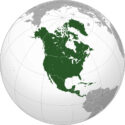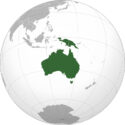 South America is the 4th largest continent in the southern hemisphere below the equator. It is surrounded by the Atlantic and Pacific oceans and is connected to North America by the Isthmus of Panama. South America is comprised of 12 countries including Brazil, Chile, Colombia, and Argentina. It has a population of 440 million people with different cultural backgrounds including Spanish, Portuguese, and natives.
South America is the 4th largest continent in the southern hemisphere below the equator. It is surrounded by the Atlantic and Pacific oceans and is connected to North America by the Isthmus of Panama. South America is comprised of 12 countries including Brazil, Chile, Colombia, and Argentina. It has a population of 440 million people with different cultural backgrounds including Spanish, Portuguese, and natives.
Geography
South America continent has a diverse landscape and many unique geographical features. It is about 17.84 million km² in area which makes it 4th largest continent by area. The Atlantic Ocean covers its eastern border and the Pacific Ocean covers the western border which provides important trade routes. Further, its northern side is connected with North America and surrounded by the Caribbean Sea.
Climate
South America has various climates due to its large land area, landscape diversity, and closeness to the equator. It experiences almost all types of climate and some of them are:
- Tropical Climate – The majority of the land area of South America is closer to the equator which gives it a warm and wet climate around the year. The amount of rainfall in these tropical regions is higher which supports lush vegetation and diverse wildlife.
- Dry Climate – Some regions of South America are extremely dry and warm because they receive almost no rainfall, like the Atacama Desert.
- Temperate Climate – The regions that are situated far southern part of the continent mostly experience temperate climate. They are warmer in summer and colder in winter.
- Mountain Climate – Temperatures drop when moving higher to a mountain and peaks of large mountains are covered with snow around the year. The Andes Mountains experiences this climate and dry conditions as you go higher up.
- Rain Shadow Effect – Eastern Chile mostly experiences a dry climate due to the blockage of moisture from the Andes Mountains.
Land Features
South America’s land and biodiversity make it one of the natural wonders. It features most of the land features including large Mountains, vast rivers, thick forests, coastlines, and deserts. Here are some of the famous land features:
Amazon Rainforest
 Amazon Rainforest is the world’s largest tropical rainforest which features very diverse flora and fauna. It has spread to Brazil, Colombia, Peru, and some other countries. It also contains the famous Amazon River which flows through the forest and is one largest river on Earth.
Amazon Rainforest is the world’s largest tropical rainforest which features very diverse flora and fauna. It has spread to Brazil, Colombia, Peru, and some other countries. It also contains the famous Amazon River which flows through the forest and is one largest river on Earth.
Andes Mountains
 The Andes Mountains are stretched to a distance of 7,000 km (4,300 miles) which makes them the world’s longest mountain range. It is situated along the western coast of South America and passes through Argentina, Chile, and Peru.
The Andes Mountains are stretched to a distance of 7,000 km (4,300 miles) which makes them the world’s longest mountain range. It is situated along the western coast of South America and passes through Argentina, Chile, and Peru.
Atacama Desert
 The Atacama Desert is one of the driest places on the Earth that can go years without rainfall. But, it is still full of many beautiful landscapes, such as rocky valleys, colorful lagoons, and salt flats.
The Atacama Desert is one of the driest places on the Earth that can go years without rainfall. But, it is still full of many beautiful landscapes, such as rocky valleys, colorful lagoons, and salt flats.
Angel Falls
 Angel Falls is the tallest waterfall on the Earth which drops water from a height of 979 meters (3,200 feet). It is located in Canaima National Park of Venezuela which is also filled with flat-topped mountains known as tepuis.
Angel Falls is the tallest waterfall on the Earth which drops water from a height of 979 meters (3,200 feet). It is located in Canaima National Park of Venezuela which is also filled with flat-topped mountains known as tepuis.
Lake Titicaca
 Lake Titicaca is South America’s largest lake that is situated between Peru and Bolivia. It is well known for its crystal clear water and floating islands made by locals.
Lake Titicaca is South America’s largest lake that is situated between Peru and Bolivia. It is well known for its crystal clear water and floating islands made by locals.
People and Cultures
South American continent is populated with 442 million people with a mix of traditions and cultures. It history goes back to ancient human civilizations and its culture has the influence of Europeans and Africans. Before the arrival of Europeans, South America was home to some of the advanced civilizations including the famous Inca Empire. The influence of Europeans started to appear in the 1500s including Spanish and Portuguese. The African cultural influence was due to the bringing of millions of slaves during the colonial period.
Facts
- The Amazon rainforest is considered as Lungs of the Earth due to its large and dense population of trees which contribute to the production of oxygen.
- The South American continent lies along the Pacific Ring of Fire and contains many active volcanoes including Ojos Del Salado.





